In the natural world, a good way of not being eaten is to look like something that has no nutritional value – or, better still, tastes revolting. This sophisticated form of defence is known as ‘masquerade’. It’s not the same as camouflage – that’s simply hiding, says masquerade expert Dr John Skelhorn at Newcastle University.
1
'Bird poop frog' (Theloderma asperum)
Take this ‘bird poop frog’ (Theloderma asperum) of Southeast Asia. Its predators, such as snakes and birds, may notice it squatting on a leaf, but misidentify it as avian splatter and carry on.
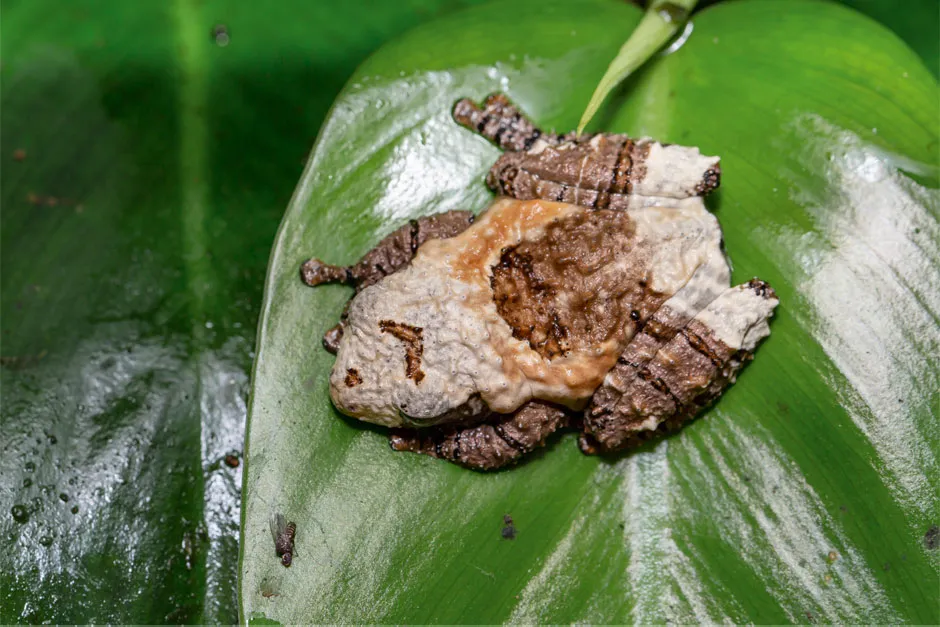
“Bird droppings are perfect for masquerade as they’re so common in the environment,” says Skelhorn, adding that posture is often part of the foolery. “When I held one of these little frogs, it tucked its limbs in so convincingly. It even had the slight iridescence that poo has.”
See more brilliant nature photos:
- 36 amazing photos from the Underwater Photographer of the Year 2020 competition
- 14 amazing photos from the BMC Ecology Image Competition 2018
2
Ceratocaryum argenteum
Plants have evolved all kinds of creative ways to disperse their seeds. Perhaps the most remarkable of all, though, is a grass in South Africa’s Cape Province called Ceratocaryum argenteum, whose shiny, pellet-like seeds (left) mimic the droppings of antelopes (right).
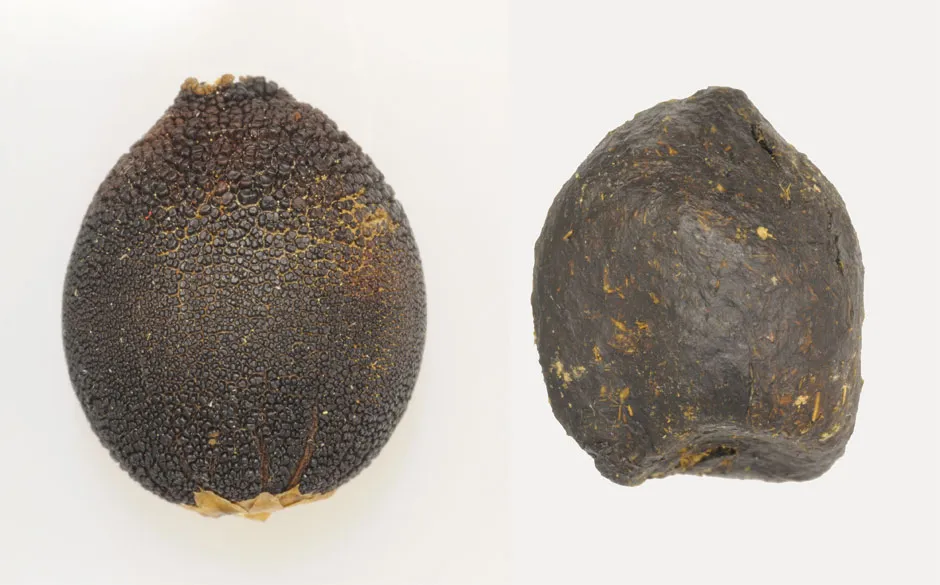
Within hours, industrious dung beetles scuttle over to roll the ‘droppings’ away, burying them in the earth (dung beetles bury poo to use as a source of food themselves, or for their larvae to eat).
What’s more, in order to bamboozle the phenomenal sensory equipment of these beetles, the grass seeds also exude a chemical cocktail that smells like antelope faeces.
In 2015, researchers at the University of Cape Town discovered that the dung beetles eventually rumble the ruse and don’t bother laying eggs in the seeds. But by then the seeds are safely buried – the ploy works just long enough to succeed.
3
Asian swallowtail (Papilio xuthus)
Caterpillars are fast-growing munching machines. Their flesh contains more protein than chicken, so it’s no surprise they’re on the menu of so many insectivorous animals. The Asian swallowtail, or Papilio xuthus, is one of several butterflies whose caterpillars fight back by copying the shape, colour and smell of bird droppings.
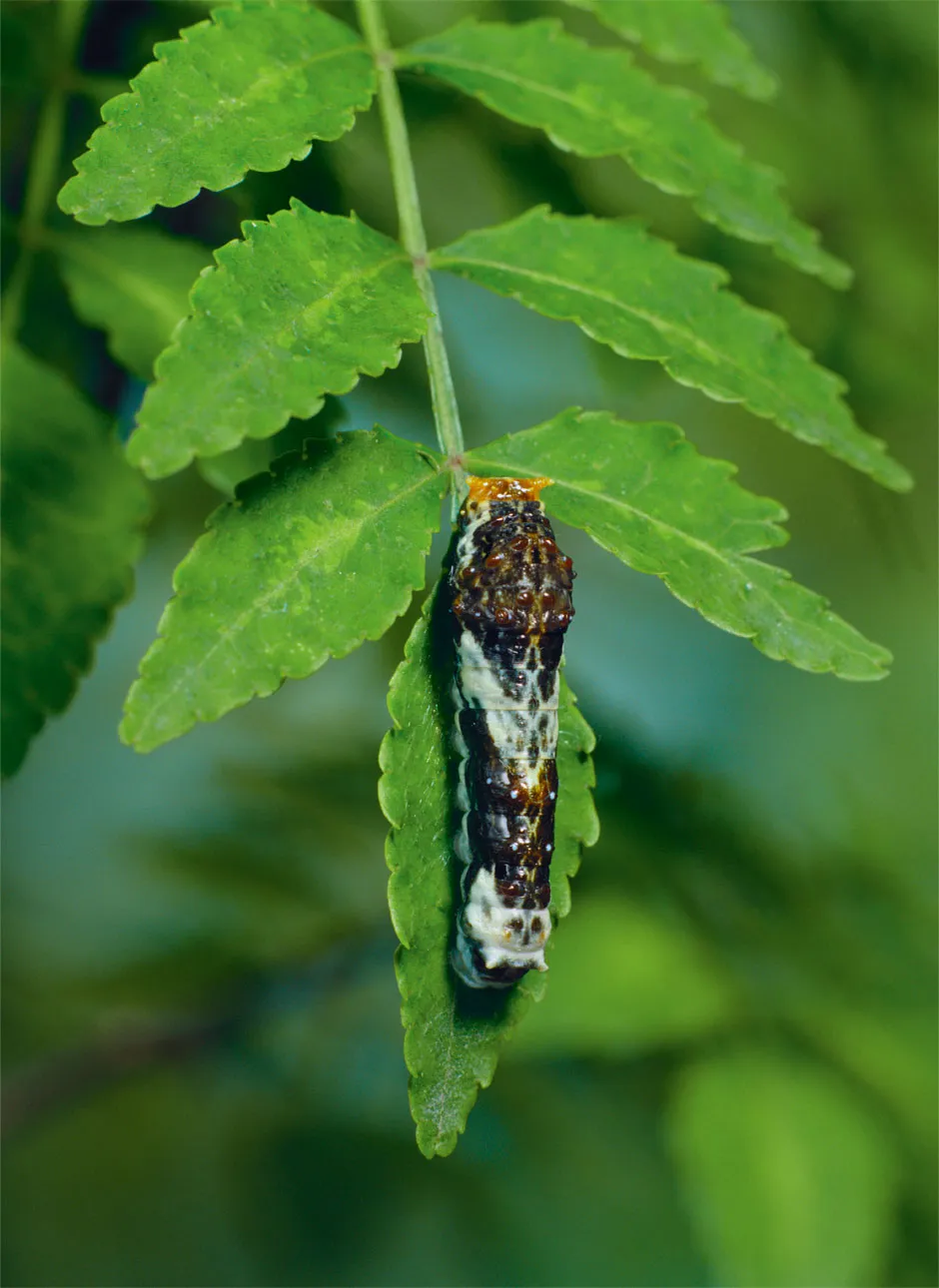
But the masquerade is limited to young caterpillars that don’t move around much, such as the one in this photo. Eventually, the larvae are too large and mobile to pass themselves off as poo, so during their final moult they acquire green camouflage and, as an extra deterrent, a pair of scary fake ‘eyes’.
“The Asian swallowtail displays amazing plasticity,” says entomologist and BBC presenter Dr Ross Piper. “When it needs to, its caterpillar swaps tactics and deploys a different defensive strategy.”
A Japanese study tested models of another species of poo-mimicking caterpillar, and found that they fooled birds only when curled up to resemble coiled droppings; replica caterpillars with straight bodies were toast. It’s not clear if the swallowtail caterpillars also have to strike uncaterpillar-like poses in order to survive.
See more science photo galleries:
- Seven beautiful clouds to brighten your day
- Striking photos from the 2019 Royal Photographic Society’s Science Photographer of the Year shortlist
4
Orb-weaver spider (Cyclosa ginnaga)
Life for an orb-weaver spider is a balancing act. Cyclosa ginnaga needs to attract tasty insect prey, while evading wasps, its main predator. “It is playing a delicate game,” says Dr Sara Goodacre of the University of Nottingham’s SpiderLab. “Does it prioritise dinner, or defence?”
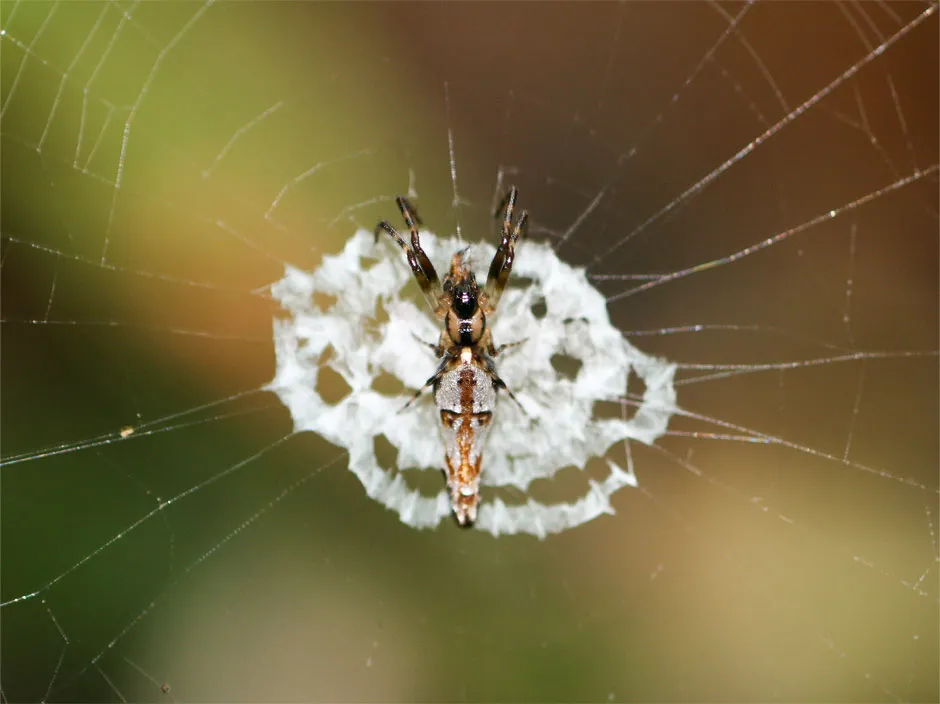
The spider adds a special kind of backcombed silk to its web to imitate splattered bird poo, and this, experiments show, attracts more poo-loving prey, such as flies. It also incorporates bits of leaf and twig, with the same effect.
Other experiments have tested whether this technique is a defence, by blackening individual spiders or their webs. They found that darkened (and therefore more visible) spiders were indeed more likely to be attacked, possibly because they looked less like poo.
So is this spider using poo mimicry for prey attraction, predator defence, or both? The jury’s out. But you can’t deny that it’s a talented artist.
5
Macrocilix maia
Adult moths and their caterpillars are masters of masquerade. Excrement is just one of a host of unpalatable things that they replicate, from dead leaves to lichen, twigs, bark and stone. Macrocilix maia of southern Asia recreates an entire scene: the adult moth’s open wings suggest not only freshly dribbled bird poo, but also two visiting flies, complete with wings, legs and red eyes.
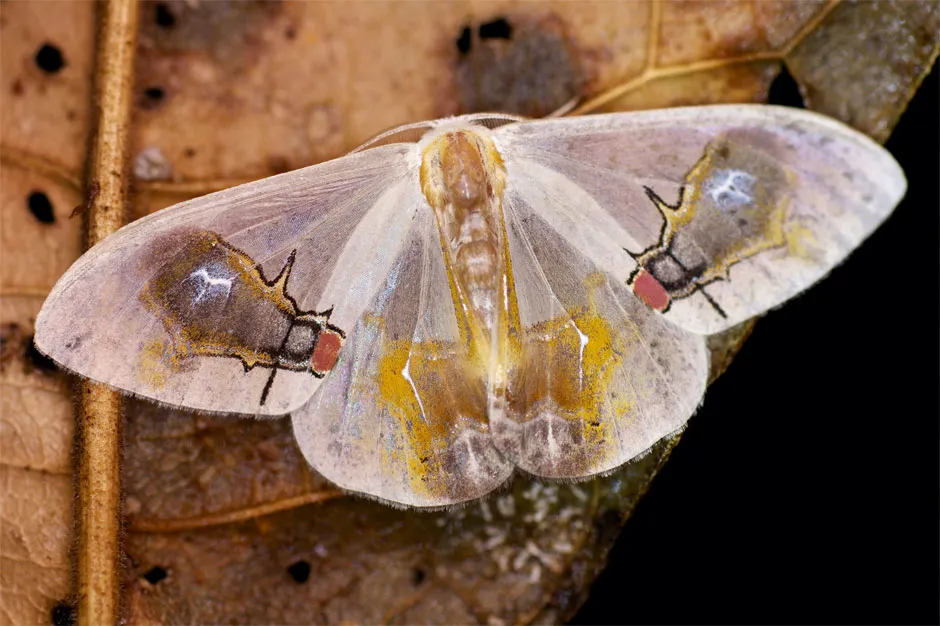
How on Earth does such mind-boggling trickery evolve? “Birds have better colour vision than we do,” says Skelhorn, “and they can make out finer detail. So to fool them, there’s a strong selection pressure. Over time, you get the evolution of perfection.”
However, he cautions that there may also be some other trade-off going on. There’s been little research so far into this species, and there might be other evolutionary reasons – apart from deception – for why M. maia has developed this impressive wing pattern.
6
Phrynarachne decipiens, P. rugosa, Celaenia excavata and Arkys curtulus
“There are many ways for spiders to look unspidery,” says Goodacre, but imitating poo is something at which they excel. Worldwide, several groups of spider are virtuoso faeces mimics, she says. “They clearly have the genetic architecture to masquerade.”
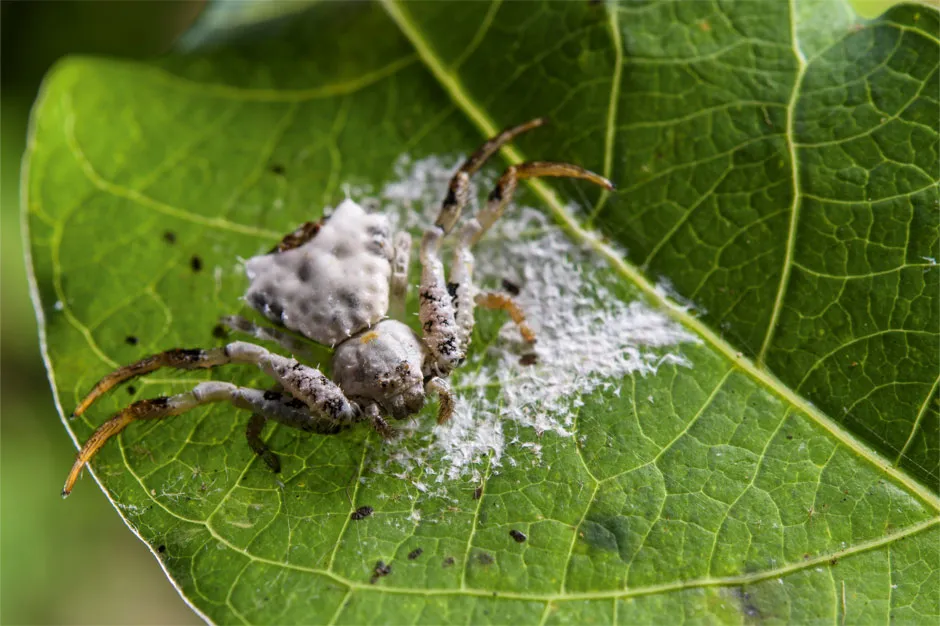
This subterfuge can involve a suite of physical adaptations, for example, adopting the size, colour, texture and patina of bird droppings.
Some species, such as Southeast Asia’s Phrynarachne decipiens (above) and P. rugosa (below) of Africa, heighten the illusion by giving off the whiff of fresh droppings and weaving a messy web around themselves.
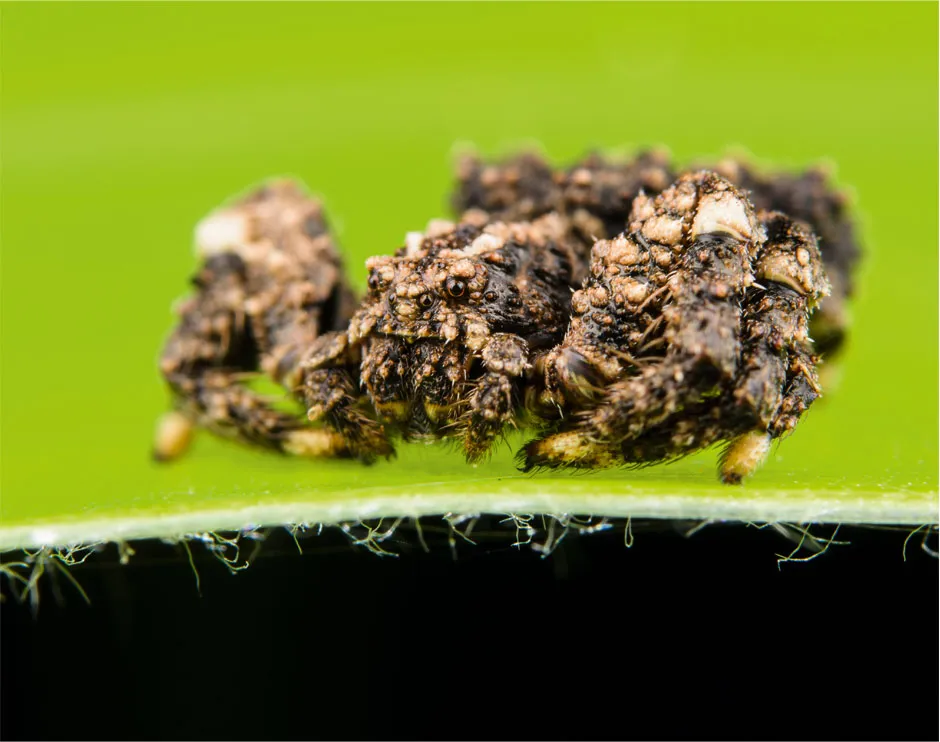
Poo-mimicking spiders also retract their limbs, changing their silhouette to an amorphous splodge. As Goodacre says: “Extended legs are a giveaway, but you can fix this for free.”
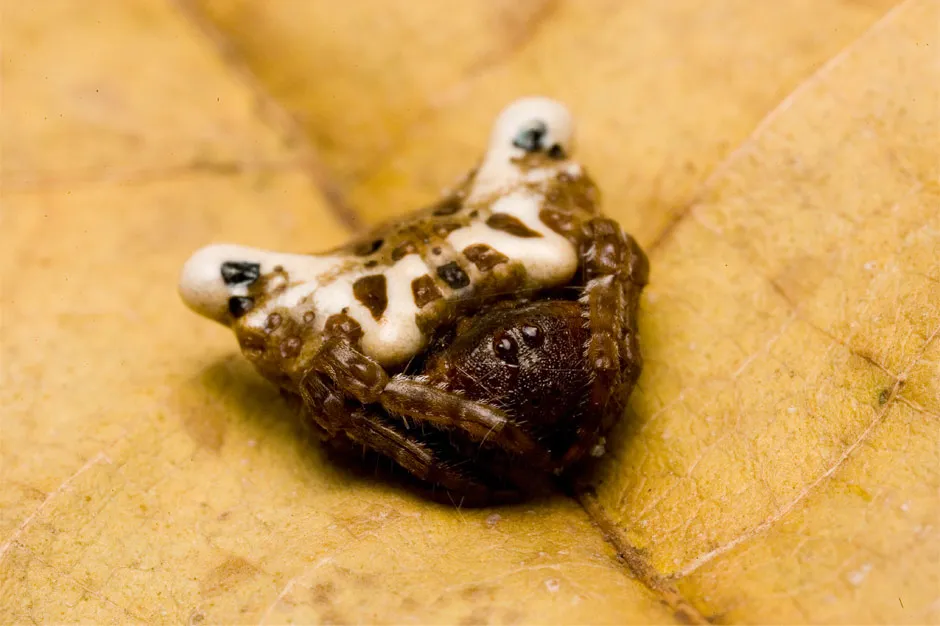
The ability of poo-mimicking spiders serves different uses in different species. Celaenia excavata (above) is a nocturnal moth-hunter, whose camouflage seems to be a daytime defence from predators such as birds.

Arkys curtulus (above), on the other hand, hunts by day and appears to use poo mimicry aggressively, to lure dung-loving flies to their doom.
